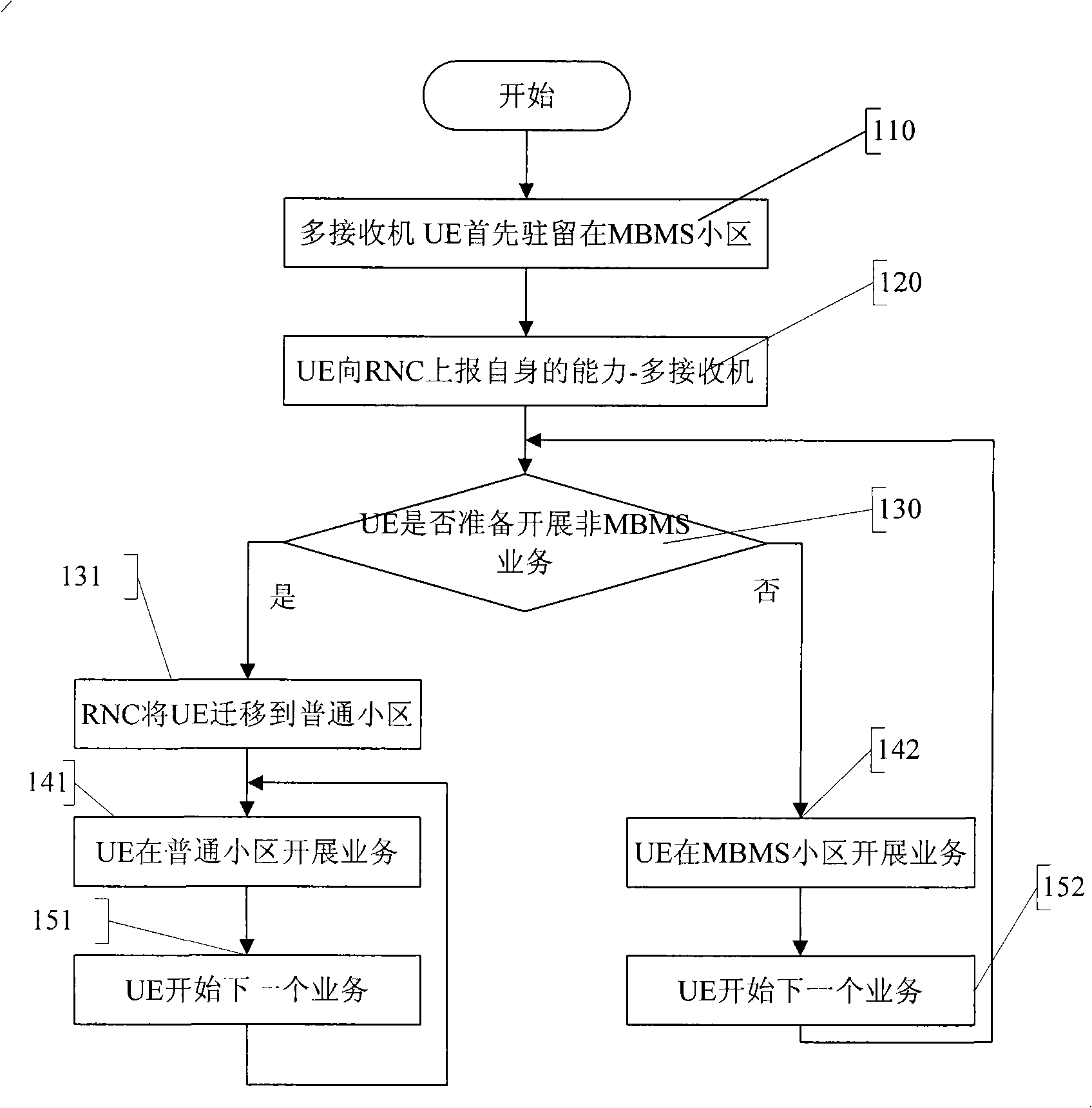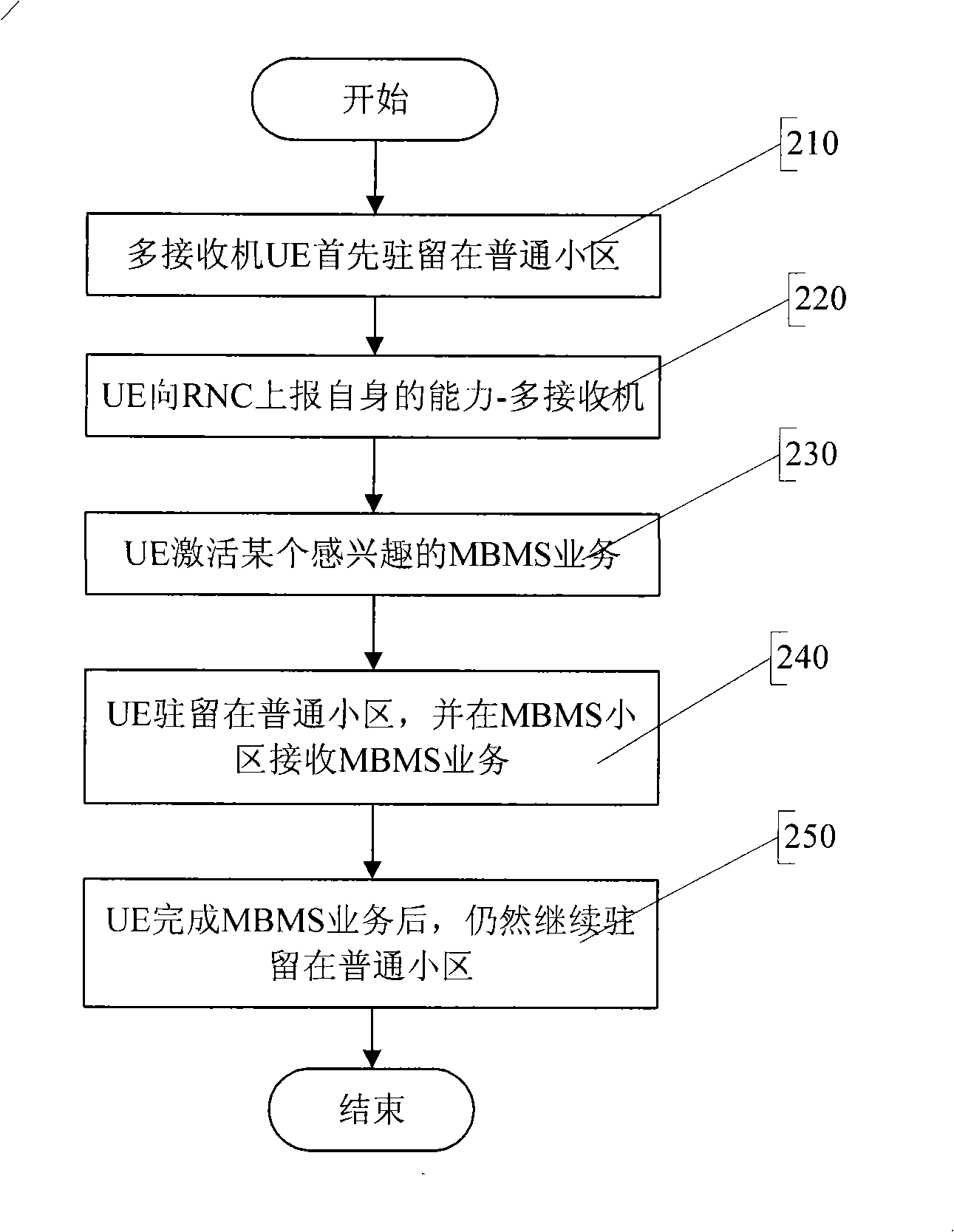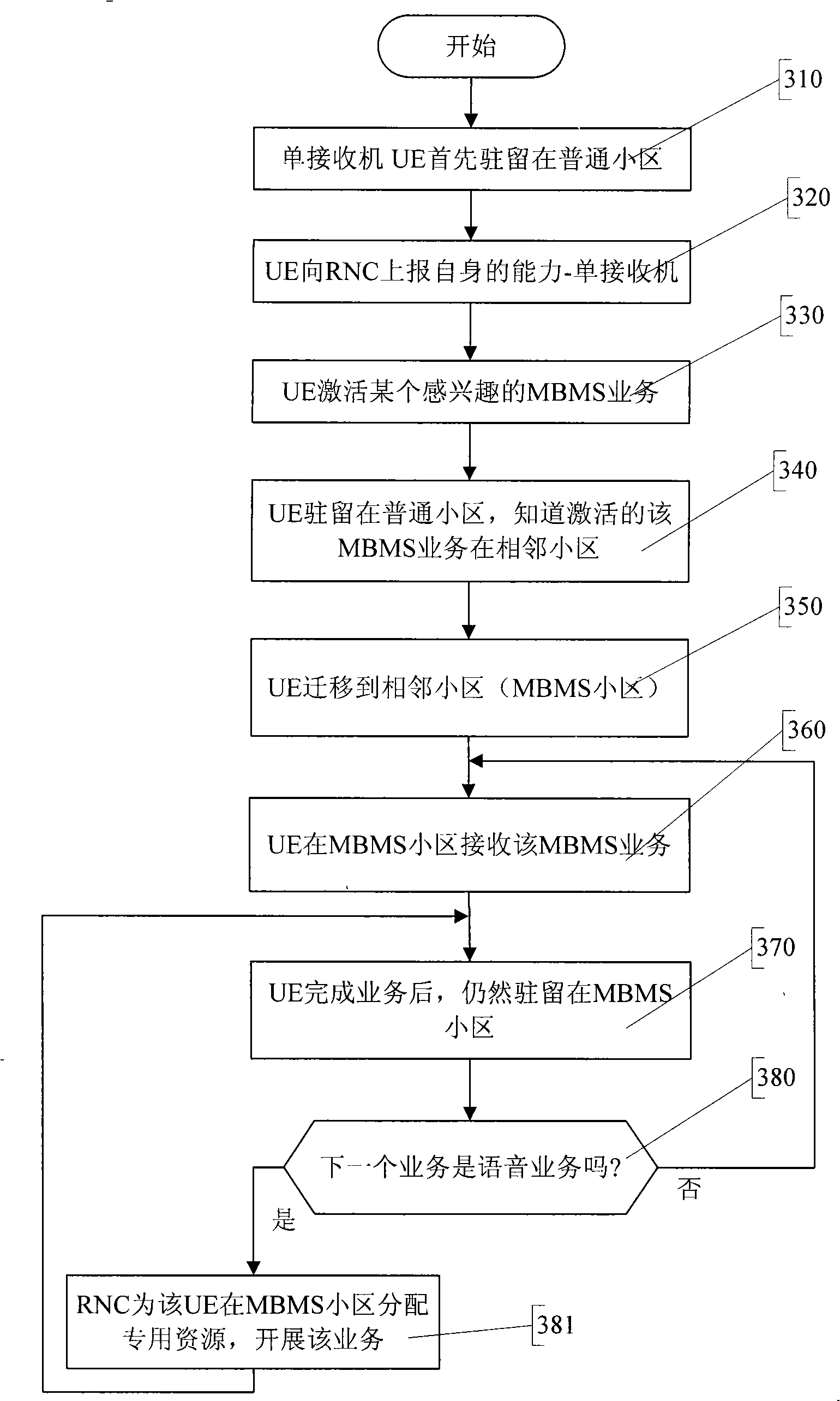Method for mobile terminal to invoke service
A mobile terminal and service technology, applied in the field of wireless communication, can solve the problem of unknown mobile terminal single receiver or multi-receiver terminal, and achieve the effect of realizing reasonable configuration and improving efficiency
- Summary
- Abstract
- Description
- Claims
- Application Information
AI Technical Summary
Problems solved by technology
Method used
Image
Examples
specific Embodiment 1
[0021] There is an R7UTRAN, and a multi-receiver mobile terminal resides in an MBMS cell of the UTRAN in advance (this cell is the cell with the best signal quality). Step 110, the mobile terminal first camps in the MBMS cell according to the cell selection principle,
[0022] This step further includes the following steps:
[0023] a) The mobile terminal selects a cell with the best signal quality after measuring the signal quality of multiple cells according to the cell selection principle;
[0024] b) RNC indicates that the sub-district is an MBMS sub-district in the system broadcast message of the sub-district, and the mobile terminal reads the system broadcast message and knows that the sub-district is an MBMS sub-district, indicating that the mobile terminal resides in the MBMS sub-district;
[0025] Step 120, the mobile terminal reports its own terminal capabilities to the RNC, including reporting to the RNC that the mobile terminal is a multi-receiver terminal;
[00...
specific Embodiment 2
[0030] Step 151, after the mobile terminal completes the non-MBMS service, it still stays in the common cell, and the mobile terminal prepares for the next service. Regardless of whether the next business is MBMS business or non-MBMS business, the mobile terminal resides in the common cell to complete. In step 141, the specific method for the mobile terminal to execute the MBMS service can refer to the specific embodiment 2;
[0031] Step 152, after the mobile terminal completes the MBMS service, it still resides in the MBMS cell, and prepares to start the next service, and executes step 130;
[0032] Through this specific embodiment 1, we can find that as long as the multi-receiver mobile terminal carries out common services, the mobile terminal will always stay in the common cell. In practice, even if the RNC can allocate dedicated resources in the MBMS cell for the first few common services carried out by the mobile terminal (assuming that the RNC believes that the dedicat...
specific Embodiment 3
[0047] There is an R7UTRAN, and a mobile terminal with a single receiver resides in a cell of the UTRAN in advance.
[0048] Step 310, the mobile terminal first resides in a common cell according to the cell selection principle, and this step further includes the following steps:
[0049] a) The mobile terminal selects a cell with the best signal quality according to the cell selection principle;
[0050] b) UTRAN indicates in the system broadcast message of the cell that the cell is a common cell, and the mobile terminal resides in this cell;
[0051] Step 320, the mobile terminal reports its own terminal capabilities to the RNC, including reporting to the RNC that the mobile terminal is a single-receiver terminal;
[0052] Step 330, the mobile terminal prepares to launch the MBMS service, and the mobile terminal activates an interested MBMS service in the cell;
[0053] Step 340, the mobile terminal still stays in this sub-district (ordinary sub-district), and the mobile t...
PUM
 Login to View More
Login to View More Abstract
Description
Claims
Application Information
 Login to View More
Login to View More - R&D
- Intellectual Property
- Life Sciences
- Materials
- Tech Scout
- Unparalleled Data Quality
- Higher Quality Content
- 60% Fewer Hallucinations
Browse by: Latest US Patents, China's latest patents, Technical Efficacy Thesaurus, Application Domain, Technology Topic, Popular Technical Reports.
© 2025 PatSnap. All rights reserved.Legal|Privacy policy|Modern Slavery Act Transparency Statement|Sitemap|About US| Contact US: help@patsnap.com



